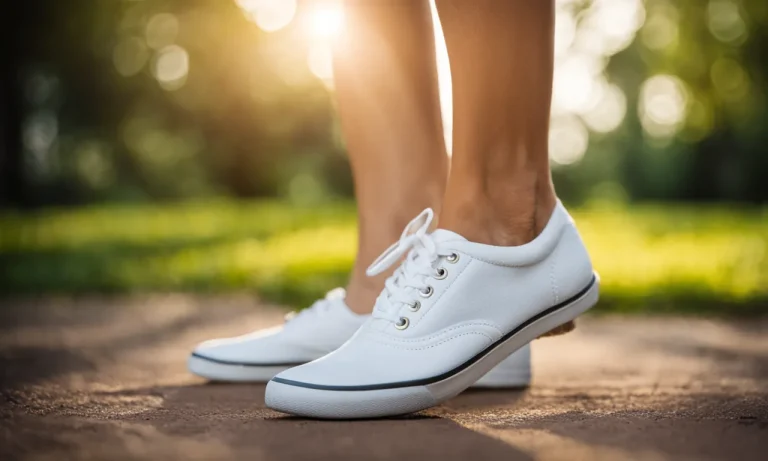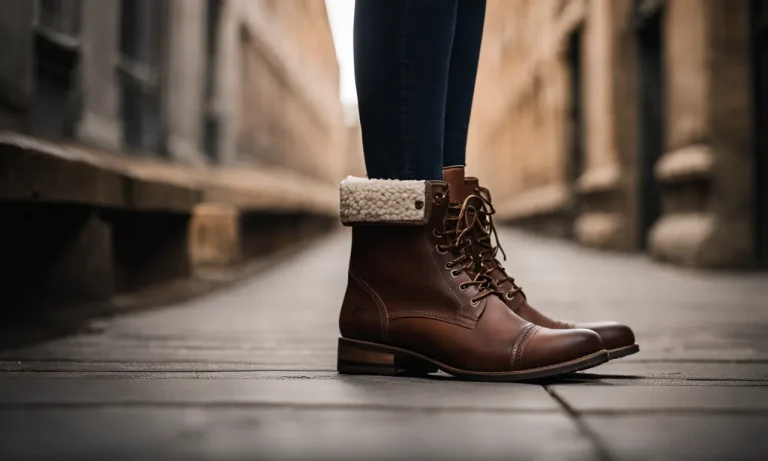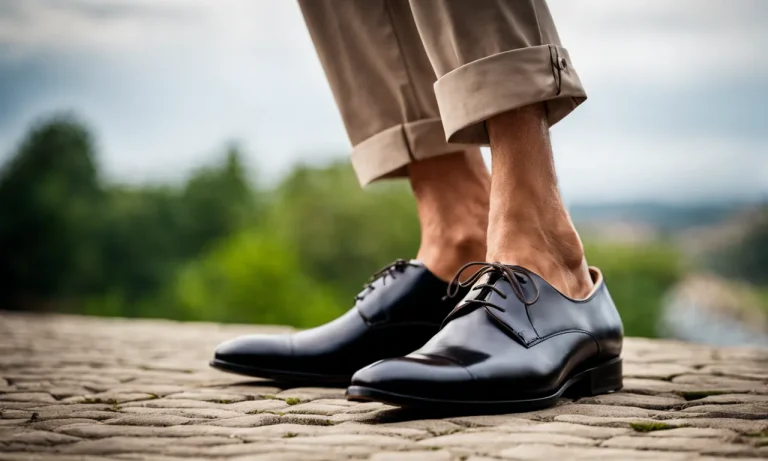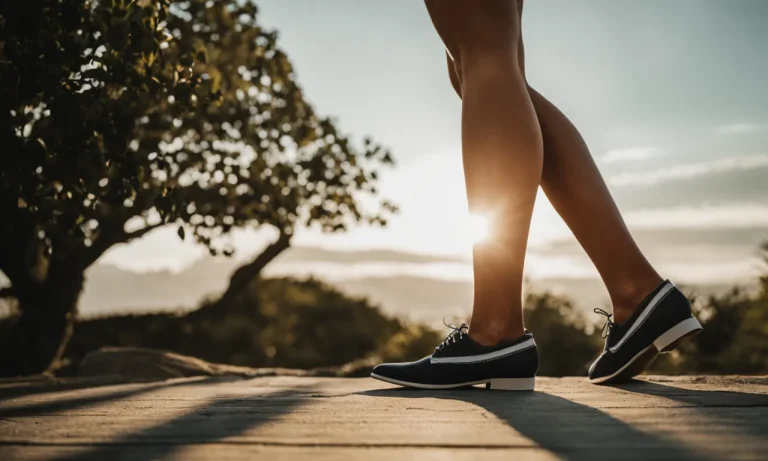Rattlesnakes are one of the most venomous snakes in North America, and their potentially deadly bite is a concern for hikers, ranchers, and anyone spending time outdoors in snake territory. If you’ve ever worried that your leather boots might not protect you from a rattlesnake strike, you’re not alone.
We’ll take an in-depth look at whether leather boots can effectively stop rattlesnake fangs.
If you’re short on time, here’s the quick answer: Leather boots likely provide some protection against rattlesnake bites, but may not fully prevent venom injection in all situations. Thick leather can make it harder for fangs to penetrate, but factors like boot type, leather thickness, and snake size impact effectiveness.
How Potent are Rattlesnake Bites?
Rattlesnakes are known for their venomous bites, which can cause severe health complications if left untreated. The potency of a rattlesnake bite depends on the type of venom it injects into its victim. There are two main types of venom produced by rattlesnakes: hemotoxic and neurotoxic.
Hemotoxic venoms destroy tissue
One type of venom produced by rattlesnakes is hemotoxic. This venom contains enzymes that break down tissues, leading to severe damage at the site of the bite. Hemotoxic venoms can cause swelling, pain, and necrosis of the surrounding tissue.
If not treated promptly, these bites can result in long-term complications, such as permanent tissue loss or even limb amputation.
According to the Centers for Disease Control and Prevention (CDC), hemotoxic rattlesnake bites can cause symptoms such as bleeding, bruising, and organ damage. Immediate medical attention is crucial to prevent further complications and promote healing.
Neurotoxic venoms attack the nervous system
The other type of venom produced by rattlesnakes is neurotoxic. This venom affects the nervous system, causing paralysis and interfering with the victim’s ability to breathe. Neurotoxic rattlesnake bites can be life-threatening if not treated promptly.
While not all rattlesnakes possess neurotoxic venom, it is important to be cautious and seek medical attention after any rattlesnake bite. The Mayo Clinic advises seeking immediate medical attention if you suspect you’ve been bitten by a rattlesnake, as symptoms can worsen rapidly.
It’s important to note that the potency of a rattlesnake bite can vary depending on factors such as the species of rattlesnake, the amount of venom injected, and the location of the bite. Each bite should be treated seriously, regardless of the type of venom involved.
Can Rattlesnake Fangs Penetrate Leather?
When it comes to protecting ourselves from a potential rattlesnake bite, one question that often arises is whether rattlesnake fangs can penetrate leather boots. The answer is not as straightforward as one might think, as it depends on various factors.
Leather hardness varies
It’s important to note that the hardness of leather can vary depending on the type and quality. Some leathers are softer and more pliable, while others are harder and more resistant. For example, full-grain leather is known for its durability and ability to withstand punctures, making it a safer choice when it comes to protecting against rattlesnake bites.
Thicker leather is more resistant
The thickness of the leather also plays a significant role in its ability to resist rattlesnake fangs. Thicker leather provides an extra layer of protection, making it harder for the fangs to penetrate through.
Therefore, choosing boots with thicker leather can provide an added level of safety in rattlesnake-infested areas.
Moisture and wear decrease protection
It’s important to note that leather, like any other material, can degrade over time. Moisture and wear can weaken the leather and make it more susceptible to penetration by rattlesnake fangs. Therefore, it’s crucial to properly maintain and care for your leather boots to ensure they maintain their protective qualities.
Boot Design and Snake Size Matter
When it comes to protecting yourself from a potential rattlesnake bite, the design and height of your boots can make a significant difference. While it is widely believed that rattlesnakes cannot bite through leather boots, there are several factors to consider.
Height of boot shaft important
The height of the boot shaft plays a crucial role in preventing snake bites. Rattlesnakes typically strike at the lower leg or ankle, aiming for the closest target. Therefore, it is essential to choose boots with a shaft that covers the entire lower leg, providing maximum protection.
According to experts at the California Department of Fish and Wildlife, boots with a shaft height of at least 10 inches are recommended for areas with high snake populations. This ensures that even if a snake manages to strike, it will have a difficult time reaching your skin.
Western boots versus hiking boots
When it comes to choosing the right boots to protect against snake bites, the type of boots you wear matters. Western boots, known for their high shafts and sturdy construction, are often considered ideal for snake-prone areas.
The thick leather and reinforced design provide an extra layer of defense against snake fangs.
On the other hand, hiking boots may not offer the same level of protection. While they may provide adequate support and comfort for outdoor activities, they often have a lower shaft height and thinner materials, making them more susceptible to snake bites.
Larger snakes have longer fangs
It’s important to remember that the size of the snake also plays a role in its ability to penetrate leather boots. Larger snakes tend to have longer fangs, which can potentially reach through thinner materials.
A study conducted by researchers at the National Park Service found that the average fang length of a rattlesnake can range from 0.5 to 0.8 inches. While this may not seem like much, it is enough to puncture thinner leather or fabric.
Therefore, it is crucial to choose boots with a thick, durable leather that can withstand the force of a snake bite. Additionally, consider wearing snake gaiters or employing other protective measures when venturing into snake-prone areas.
Prevention and First Aid for Snake Bites
Snake bites can be a serious and potentially life-threatening situation. It is important to take precautions to avoid encounters with snakes, especially in areas where they are known to be present. Additionally, knowing the proper first aid measures can greatly reduce the risk of complications.
Here are some tips on prevention and first aid for snake bites.
Stay alert in snake territory
When venturing into areas where snakes are commonly found, such as forests, deserts, or grasslands, it is crucial to stay alert and aware of your surroundings. Keep an eye out for any movement or sounds that may indicate the presence of a snake.
Avoid tall grass, piles of leaves, and rocky areas where snakes may hide.
It is also important to remember that snakes are most active during warmer months, so exercise extra caution during this time. If you are hiking or camping, make sure to stay on designated paths and trails, as snakes are less likely to be found in these areas.
Wear thick, high boots
One of the best ways to protect yourself from snake bites is to wear thick, high boots that cover your ankles. Snakes typically bite at ground level, so having proper footwear can provide an extra layer of protection.
Leather boots are often recommended, as they are more resistant to snake fangs compared to other materials.
It is important to note that while thick boots can provide some level of protection, they are not completely snake-proof. Snakes have sharp fangs that can penetrate leather, especially if the bite is forceful.
Therefore, it is still important to exercise caution and avoid close encounters with snakes.
Seeking medical care quickly
If you or someone you know has been bitten by a snake, it is crucial to seek medical attention immediately. Time is of the essence when it comes to snake bites, as the venom can spread rapidly through the body.
While waiting for medical help, there are a few first aid measures that can be taken. These include keeping the bitten area still and below the heart level, cleaning the wound with soap and water, and covering it with a clean, sterile bandage.
It is important to avoid applying ice, tourniquets, or attempting to suck out the venom, as these measures can do more harm than good.
Remember, snake bites can be serious and potentially life-threatening. It is always best to err on the side of caution and seek medical attention immediately. For more information on snake bites and prevention, visit https://www.cdc.gov/niosh/topics/snakes/default.html.
Conclusion
While leather boots, especially higher models like cowboy boots, can provide a degree of protection against rattlesnake bites, they are not guaranteed to fully prevent venom injection in all situations. Your best bet is to remain alert and give snakes plenty of space when in territory they inhabit.
Taking proper precautions like wearing thick, high leather boots and seeking immediate medical care can greatly improve outcomes if you are bitten. While a bite through leather boots is possible, they remain a sensible precaution against rattlesnakes.






